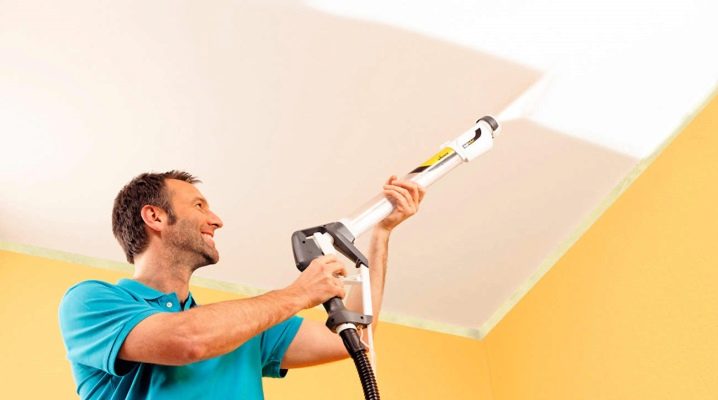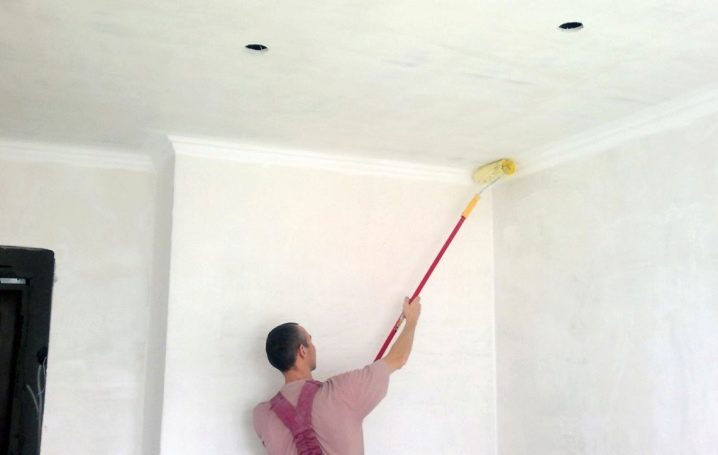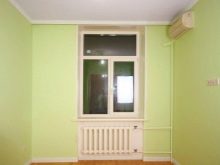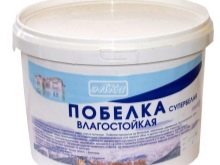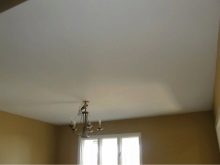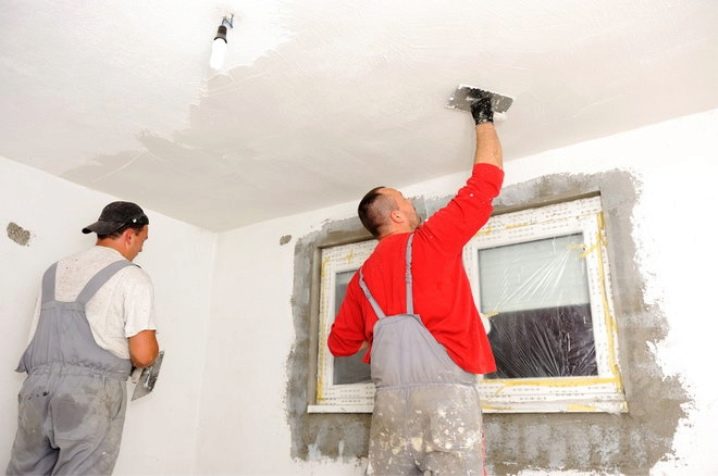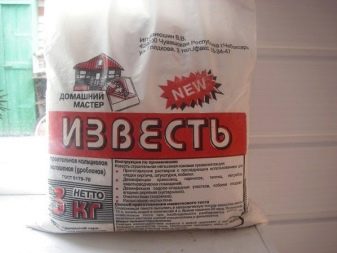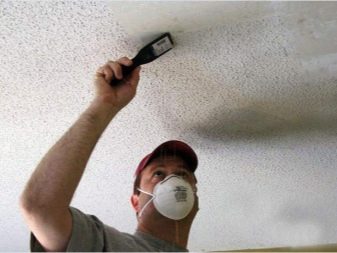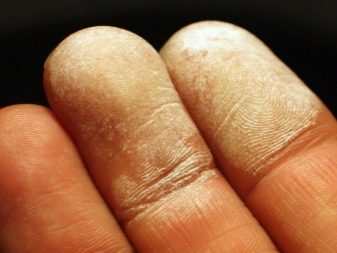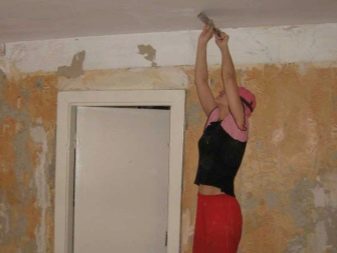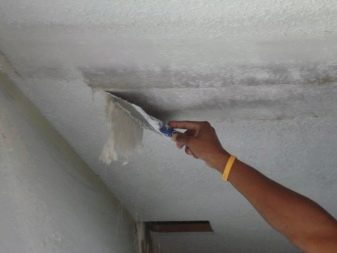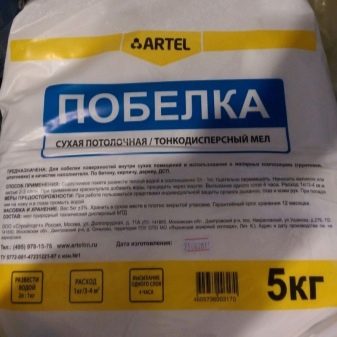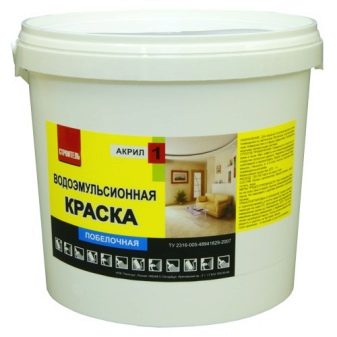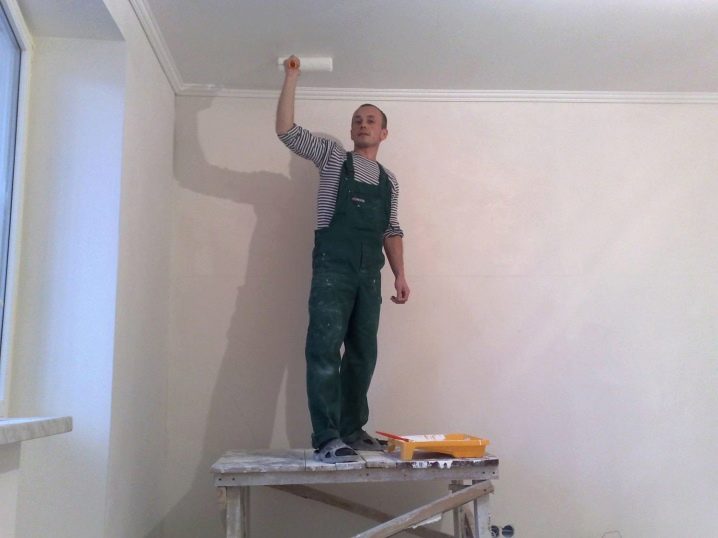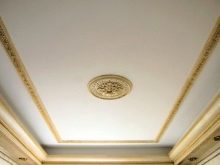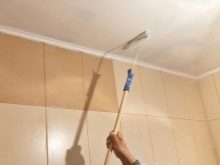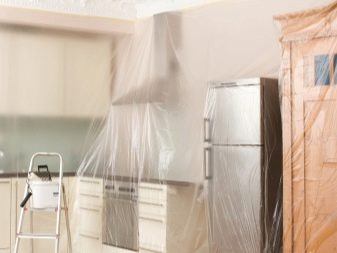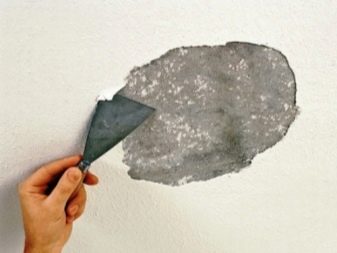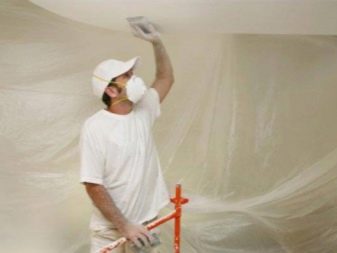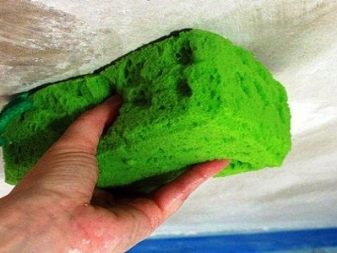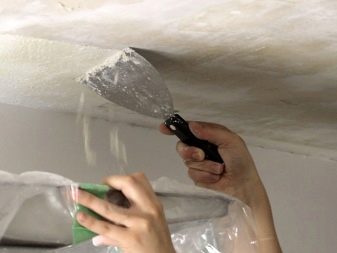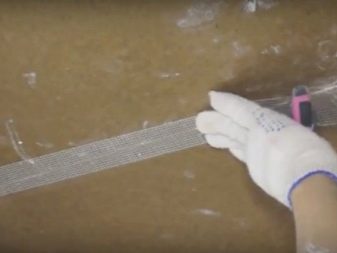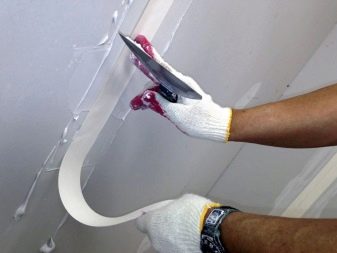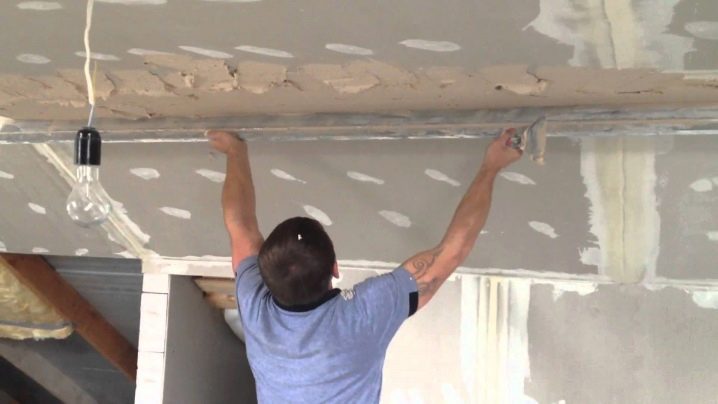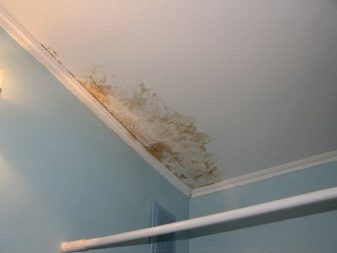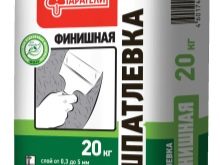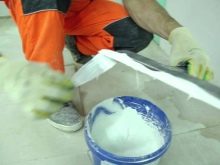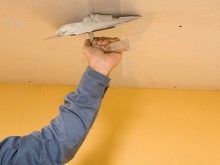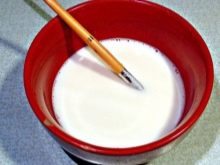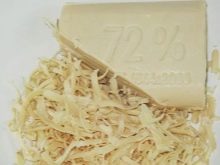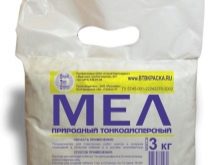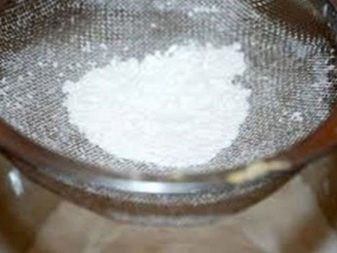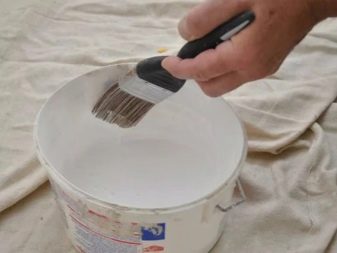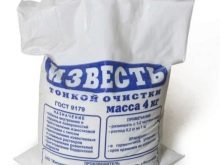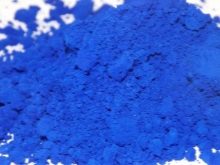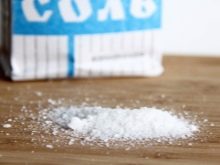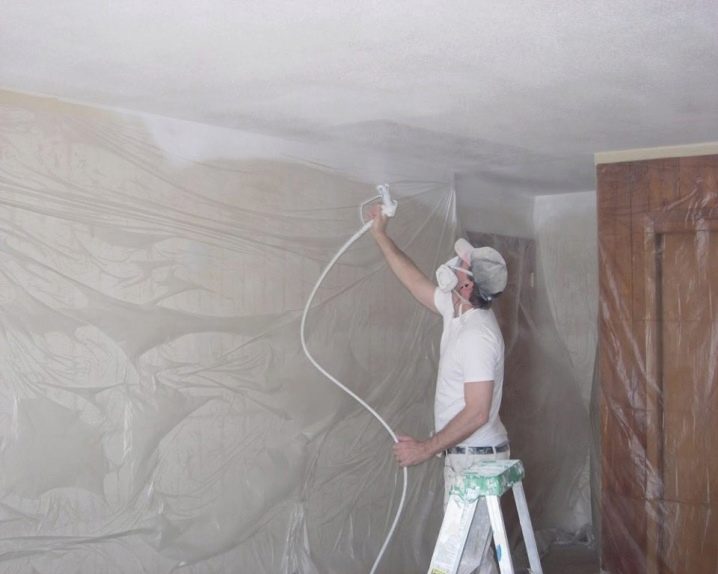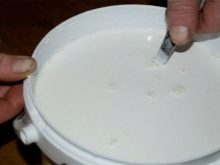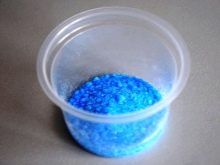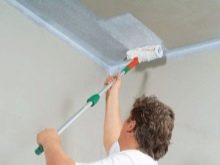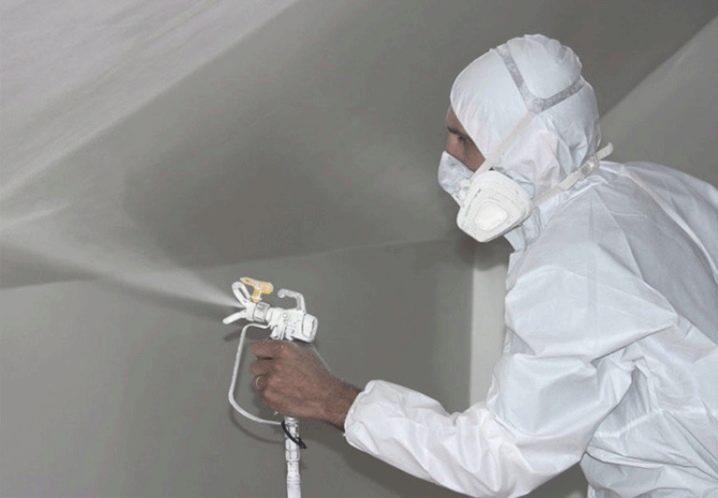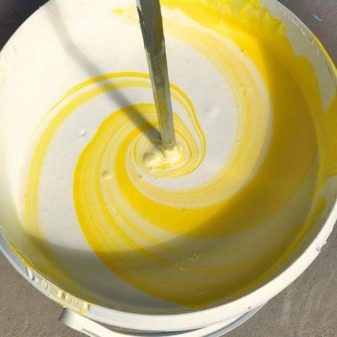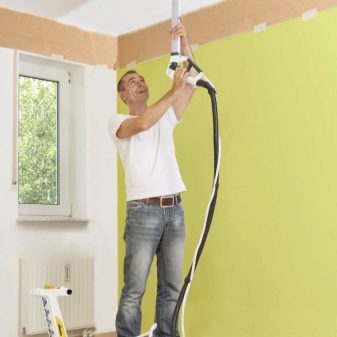How to whiten the ceiling?
Whitewashing has always been the most popular method of decorating the ceiling, which is why many are interested in how to properly paint the ceiling with chalk or lime.
What it is?
Whitewashing the ceiling - the safest way for the human body to finish the ceiling surface. It does not make sense to compare this method with tension, suspended, metal or plastic structures, because whitewashing allows the ceiling to “breathe” and is much easier. The material used for making whitewash is completely natural, therefore it will not have any unpleasant effects on a person.
Special features
With whitening, you can give the ceiling an aesthetic appearance and refresh the interior of the room. The main rule for the quality of the procedure is that it is necessary to thoroughly clean the surface and prepare it.
You must pay attention to the following points:
- what type of whitewash was used previously;
- how durable is the old coating;
- what types of pollution are present on the previous coating;
- whether there are cracks and chips in the old layer;
- is there any allergy to the components of the composition of any of the residents of the house;
- features work with selected materials for whitewashing.
Before carrying out the main work, it is important to decide whether the previous layer will be removed or it can be left. If the previous layer is crumbling or has begun to move away from the ceiling, then before the new whitewash it is necessary to remove the previous one. If the coating is peeled off in parts, then these layers can be removed, and the resulting irregularities can be hidden with putty.
Ceiling whitewash has both its advantages and disadvantages.
First of all, it is necessary to correctly calculate the consumption of 1m2, as well as determine the correct proportions. Updating the ceiling in this way is not at all difficult.
What to whiten?
To whiten the ceiling, chalk, lime or water-based paint is most often used. Mostly the choice of most people is based onwhat material the ceiling was processed earlier. You can learn it yourself, you only need to hold your finger on a dry surface. If the whitewash does not leave any marks on your hand, then lime is surely used, since the chalk will always remain on the fingers.
If you still have doubts, you can wipe the ceiling with a wet hand. Lime whitewash will darken, but the hand will remain clean, while the chalk will leave its marks. It is not recommended to use whitewash from chalk for applying on calcareous, as this will necessarily lead to the formation of stains and stains, due to which the ceiling will have to be painted more than once to hide poor quality work.
The ideal interval between repeated whitewashing is 1-2 years.
Chalk guarantees a deep white color. It is more saturated than other types of coatings. It is characterized by the presence of bactericidal properties and excellent resistance to high humidity. The presented type of whitewash is completely hypoallergenic and safe, meets all established hygienic requirements. Means for removing chalk is not very difficult to pick up.
Lime coating can hide small defects in the ceiling., it cracks and cracks, resulting in a smooth and smooth ceiling. A distinctive feature of this type of whitening is a high moisture resistance. It is important to note that such material can cause an allergic reaction in some people, so before deciding to use this type of whitewash, it is important to check all residents for allergies. The coating has a strong smell and dries much longer than the chalk option. Most often, the submitted material is purchased for finishing the ceilings in the bathrooms.
You can whiten the spray gun or apply a spray. Some hardware stores also offer another tool for work.
Preparatory work
It is not recommended to apply a new whitewash layer without removing the old one, since the old layer will begin to peel off and stick to the brush after it is wet. This will significantly complicate the process. As a result, you will get a not very smooth surface, and the work will be spoiled. Therefore, it is important to pre-clean the ceiling.To do this, you must first remove everything from the room or cover it with polyethylene, since it is difficult to wash objects from whitewashing.
The preparatory work is carried out in several stages. When working, you should follow the following step-by-step instructions:
Cleaning the ceiling surface
To prepare the ceiling, you need to take:
- water tank;
- big sponge;
- putty knife;
- rags;
- stool or stepladder.
If you start cleaning the dry ceiling, the process will take a lot of time, and there will be a lot of dirt and dust, which you can get rid of with a vacuum cleaner. If you pre-moisten the surface, then it will be more convenient to remove the whitewash and take less time. It is not necessary to immediately wet the entire surface, as it dries very quickly. It is recommended to divide the ceiling into sections and moisten each of them during the work. Preparation must be thorough.
After you wet the whitewash, you need to leave it for a few minutes.so that the entire layer is soaked with water. After that, you can easily clean off the coating with a spatula. The remaining pieces of chalk or lime are wiped with a damp cloth until a trace is left of them.Washing away all traces, do not use a lot of water.
Seal joints, cracks and various damage
For this you need to take:
- serpyanka;
- putty solution;
- sandpaper;
- primer material;
- brush or roller;
- building level.
There are always joints in the ceiling that can diverge over time. To avoid such a situation in the future, they are embroidered, and the gap formed is filled with a putty. For this you can use shpakril. Further, these holes are closed serpyanka, which is superimposed layer of putty mixture. The result should be a flat surface.
While the joints will dry out, you should carefully examine the ceiling and identify the presence of defects. Even the smallest cracks must be rubbed with a solution, and the grooves and chips are treated with a putty.
Stain removal
Very often stains are formed on the ceiling surface that can leak through the whitewash. The process of their removal is rather complicated. This should be done before applying a new layer. Yes, the first time the ceiling will have a rich white color, but over time the spots will leak, which will spoil the overall picture.You can remove these spots by whiteness or bleach. It is necessary to take a sponge, dip it in a liquid and attach it to the stain, holding it until it brightens. Naturally, you need to work in special gloves so as not to harm the skin. This option to remove stains is suitable if they were formed by water.
Rust stains are more difficult to remove and require copper sulfate to be present in the solution. Preparing a saturated bright blue solution, which smeared spots. After drying, it is important to repeat the procedure. Next, you need to prime these areas and dry them well.
Alignment
When you have already eliminated the visually detected defects, it is necessary to attach a level to the ceiling in various places. So it will be possible to determine the existing irregularities and their size. If there are deep areas, they need to be separately puttied, and then, when the solution in the part of the recess dries, you need to putty the entire surface of the ceiling. Specialists usually use finishing putty. It is usually applied in two layers. Each of them has a thickness of 1-2 millimeters.
At this stage, you will need 2 trowels to work. One is narrow and the other is wide. A thin solution is applied to the surface, and it is spread wide over the ceiling. Sweats and streaks can be removed after drying with emery cloth. You need to sand the entire surface to make it as smooth as possible. After the completion of this process, the ceiling must be wiped with a dry cloth and primed.
If the wallpaper is dirty, it is necessary to clean them carefully. Blur should be gentle.
How to do it yourself?
The greatest demand for whitewashing the ceiling are materials such as chalk and lime. You can prepare whitewash with your own hands, while you will be confident in the quality of the prepared mixture.
Chalk
Chalk is very often used to prepare the solution for whitewashing the ceiling.
To make the solution yourself, you need to follow the further instructions:
- Pour a small amount of warm water into the prepared container, where you need to add 30 grams of casein glue. This type of glue can be replaced with PVA or bustilate;
- separately you need to rub the packaging of household soap and add it to the container;
- carefully stir the resulting solution until smooth;
- add 3 kilograms of the sifted chalk to the resulting mass, do it gradually, constantly stirring the solution.
Sifting chalk is necessary in order to eliminate lumps and other foreign inclusions, so it will be easier to dilute it. Glue is needed to provide the best adhesive properties. It should be noted that as a result, it is still necessary to strain the mixture through gauze. The better and more thoroughly you prepare the solution for whitewashing, the better and easier it will be applied to the surface. Consequently, the result of the work done will be of higher quality.
Lime
Submitted material is also popular. You can use several methods of preparation of the solution. This article will look at 2 of them.
In the first variant, you need to take 2.5 kilograms of lime, to which 100 grams of salt soaked in water and a small amount of blue is added. These components should be well mixed, after which they need to add such an amount of water to a final volume of 10 liters. The method of applying this solution is similar to that used for whitewashing from chalk.
The second cooking option is as follows: in water it is necessary to dilute 1.7 kilograms of lime, where next you need to add 40 grams of blue. These components must be thoroughly mixed. With the help of a lime coating it is possible to protect the surface from harmful microorganisms, whilst whitewashing helps to eliminate small cracks in the ceiling.
Before you begin to whitewash the ceiling using a mixture prepared on the basis of lime, it is important to check its consistency. To do this, it is necessary only to lower any metallic product into the solution. After you take it out of the mixture, it should completely cover it. If this does not happen, for example, the mixture will drain from the metal, leaving no traces, then this indicates that the solution is very liquid. In such a situation, it is required to add a small amount of lime, while not forgetting to stir the mixture until the desired result is obtained.
It is important to note that whitewashing lime requires caution during surface treatment.
Evaluation of the consistency of whitewash can be carried out in a similar way for the one made on the basis of chalk.It is up to you to decide which material to use in order to whiten the ceilings in the apartment, but it should be noted that a rich and bright white color can only be achieved using chalk.
Tips and tricks
The main rule in the implementation of whitewashing the ceiling is that a small amount of blue must be present in the solution (approximately 20 grams per 10 square meters). This trick will avoid a yellowish tint.
When whitewashing the ceiling surface it is necessary to take into account the peculiarities of the room. For example, for a bathroom it is necessary to use a special solution that will be moisture resistant and will be able to protect the surface from the formation of fungus. Otherwise, the paint will lose its appearance and in the shortest possible time will begin to crumble.
It should be remembered when painting about the basic rules of safety.
Safety goggles, rubber gloves and a respirator should be used to prevent paint from getting into the eyes, on the skin and in the respiratory tract. If you ignore these moments, you can provoke an allergy or chemical burns.
To achieve a quality result, use the following recommendations:
- to get a uniformly painted surface, it is necessary to apply 2-4 layers of whitewash;
- apply each subsequent layer only after the previous one is completely dry;
- during the drying period there should be no drafts in the room and direct sunlight should not come to the surface, drying should occur naturally;
- if the previous layer of whitewashing was not completely removed or lags behind, then the material of the new mixture should correspond to the previous one, otherwise it may cause gray spots and stains;
- To change the color of whitewash, you can add different colors to it, which can be purchased at any hardware store.
Room renovation is a complex process that requires a serious approach, but with the help of whitewashing the ceilings you can freshen up the interior rather quickly. Similar repair can be carried out independently, having received an elegant ceiling. The information in this article will help you carry out this process correctly and avoid possible difficulties.
To learn how to make lime whitewash, see below.
